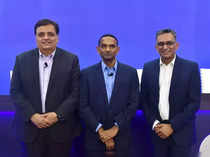 PTI
PTITCS has invested in talent development for AI and new technologies, along with partnerships and proof of concepts, revealing significant growth opportunities. Externally, this presents a major opportunity, while internally, they expect to leverage Generative AI to enhance efficiency and productivity.
We are starting the new year on a high note from TCS, but will it be a better year on all accounts in terms of the big picture?
K Krithivasan: If you look at the current quarter results, some of the macros continued. It was a seasonally weaker quarter, but at the same time, when you look at the client decision-making process, there is improvement in client decision-making. Our order book has shown significant improvement compared to last quarter and particularly US banking as North America banking has done well or consumer business has done better. So, looking at everything we are definitely more confident and positive about CY25, compared to CY24.
If you have to compare the level of confidence at the same time last year versus now, how would you describe that because that is the movie part for us.
K Krithivasan: Last year also, we said ‘24 would be better and ‘25 will be better than ‘24 and we feel ‘26 will be better than ‘25.
Mathematically, it is very simple to understand why things would be better because if we grow, obviously because of the base it would be better, but are we at that turn where AI is in the DNA of TCS and it is time to look at AI as something which is going to give incremental growth rather than dragging the business down?
Samir Seksaria: From an overall investment perspective, whether in terms of talent upskilling on AI and emerging technologies or in terms of building partnerships or investing into building proof of concepts, we have done all the right investments and the way the technology is playing out, the opportunities are significant.
Is double digit growth still a very ambitious goal?
Samir Seksaria: We would aspire for double digits, but we have to work for it.
Is it logical to aspire that high?
Samir Seksaria: As you said, mathematics is still possible with various combinations. If there is still time to work towards it, we would like to give it a shot.
The North America business has gone below 50% and that is a critical mass which we look at below 50% from North America. I think it is happening for the first time?
K Krithivasan: Maybe for the first time, but not for any wrong reason. I do not think the North America business from a TCV perspective has shown a lot of strength and the pipeline is good and it is happening because the regional markets are picking up and doing quite well. It is more a long-term diversification trend. We do not read too much into it and it’s not a bad thing.
K Krithivasan: That is what I am saying. Overall the BFSI business might show a negative number but that is more to do with the seasonality and furlough. North America banking has done well for us and similarly for North America as a geography, the TCV is good, pipeline is good, so as an indicator for future growth, it is looking positive.
Milind, what is the headline from you? Should we look at the attrition number? Should we look at the guidance on new employee addition? How should we look at it?
Milind Lakkad: No. It is very exciting from a standpoint of hiring from the campus. We are going to basically meet the numbers which I have given earlier in terms of 40,000 hires that we will achieve and it is wonderful to see an exciting young workforce coming and joining us. That is one big thing and it basically creates a lot of good positive energy in the system.
On attrition, we are well within our comfort range. I am okay with that and we will be around that as well in my mind. Overall, all the numbers in terms of headcount and everything else as I said earlier it is not a direct linear correlation with the demand or growth as such because we had a net addition of 11,000 people in the last two quarters – Q1 and Q2. We had a dip this quarter but that is all decided based on various factors which Samir talked about, whether it is productivity or utilisation. All of that comes together and that is the number which comes out. But hiring is still on and hiring will continue to go on.
As AI kicks in, I would imagine that productivity will go higher. We look at your employee addition as some kind of an indicator of growth. The more you hire, the more you will grow. But are you reaching that curve within the organisation where the correlation between hiring and growth is not going to be there and that would be a future trend?
Milind Lakkad: My point about correlation is with respect to quarterly growth versus quarterly additions or reductions. We still need people to grow, there is no doubt about it, and the correlation between how many we would need to do the same growth, there are still some ways to say that at this point in time.
K Krithivasan: Oh, legacy, when you say if it is talking about...
Mainframe for example.
K Krithivasan: Yes, that is very low. Like, there could be some renewals for the old work we do, but otherwise, predominantly new technology. Lot in the cloud, lot in the data area, like you asked them a lot of questions about AI, but for you to do more AI, you need more data foundation. We are getting a lot of order books on the data area as well.
We find nowadays in technology modernisation, particularly since you mentioned mainframe, many of our customers are trying to leverage AI to modernise the technology. So, there is new found interest in technology modernisation that also we are seeing a lot. So, less of what you would call legacy, more of newer technology.
There was a difference between deal wins versus execution and that in a sense was a challenge for the last couple of quarters. Do you see that streamlining where the execution which got delayed because of technology implementation will pick up and that is where the surprise will start coming in from the old orders also?
K Krithivasan: To some extent, yes. Like, what was the reason for the deal wins or the revenue was not closely tracking deal wins. We are talking about some old projects getting paused because of the prior reprioritisation. That cycle is slowly coming to an end. Also, as confidence started building up in the market, more discretionary spending also came up. The deal wins converting into revenue in a more predictable way.
The deal win like the TCS of 2021 and 2022, whatever deal win is, we will see acceleration in volume of the revenue, will that come back again?
K Krithivasan: But we do not correlate the deal win of this quarter with the revenue of next quarter, but there would be a broad correlation.
There is a big bump-up in India business, we all know that. How much will BSNL still be accounted for in this quarter? When will that business start waning away?
Samir Seksaria: Last quarter, we said that the large transformation programme which we are doing for BSNL is running at its peak and it has been running at similar levels till last quarter. From an execution perspective, almost 70% of it is complete in terms of installation and commissioning. About 60,000 towers, 60% of it is running commercial traffic. The current order was for about 100,000 sites. And as it goes, the revenue from that contract will start tapering.
So, in FY25, all the BSNL work would be accounted for? Will spillover happen in FY26?
Samir Seksaria: There would be something which could spill over into Q1 as well.
As we look into the future, how many deeper engagements are you getting with the same clients now? The idea is perhaps to get more and more relevant as technology changes. How much of it is repeat business? How much is coming from a new engagement?
K Krithivasan: I do not have the exact number, but 96% to 97% of revenue always comes from the existing customers and about 2% to 3% comes from the customers you win in a given year. That has been the trend for quite a long period.
What happens to entry-level salaries and that is an industry-specific question because now it has become a problem to attract talent in the IT sector. Is a solution coming soon? Do you see the base is changing?
Milind Lakkad: The solution is already there. We have been hiring for the last many years and we have enhanced that. Now, whether it is Ninja to Digital to Prime, people come at different compensation levels and that is our solution to this. We ask people to come at different levels and anybody and everybody can participate in those levels.
And Rs 3.5 lakh means Rs 3.5 lakh, that is not changing?
K Krithivasan: Now, if you are qualified, if you can clear the test at the higher level, you get into a higher salary band. More importantly, even if you come at a lower salary band, Milind and his team give them an opportunity to clear the exams and get into a higher salary band, even after joining TCS. So, it is a way we can say, choose your salary.
What is the thumb rule for wage inflation in the IT sector? In and around inflation?
Milind Lakkad: The point is, we would not go with that, but we would basically have an internal mechanism where we can get all these people to higher salary bands when they join. For example, we increased our digital proportion from 17% to 40% this year. That is what we want to do. We need talent at all levels and the whole purpose is to get them at a certain level at which they are coming in. They come at a higher level, they get the higher salaries and like Krithi said, a mechanism to have them move up when they come in. We would rather go with our learnability of people rather than any external parameters.
So, what’s in store for the shareholders in 2025? One benchmark which shareholders look at is what is the first take on IT outsourcing? Have you got any sense from your clients?
K Krithivasan: Yes, from whatever discussions we have been having with our business lease and the client partners, it is going to have a positive bias.
Could you give us a number?
K Krithivasan: It is too early to put a number, but the sentiments are positive. We are finding,maybe a slight increase, I do not want to put a number, but there is a positivity in the overall IT budget.
But are you getting a sense of the momentum? Are you getting a sense that the entire disruption because of AI adjustment, order delays, is history now?
K Krithivasan: That should be too early to call. We have started seeing signs of recovery, signs of discretionary budget being released. It is too early to say that everything is smooth. For me, the good news is that we are starting to see signs of recovery, signs of positivity among the client partners and more confidence. Those are the good signs that we are seeing.
What is your definition of recovery? Better deals? A percentage number?
K Krithivasan: Our TCV is in a good place and of course Q-on-Q revenue is also becoming much stronger than what it is. That defines the recovery.
It has to be a margin with you always. If things are looking better, if there is better clarity than last year, if order books are better, if wage inflation is under control, if I put all that together, can you go back to your pre-AI disruptive margin band? Are you attempting to go there somewhere in FY25, FY26?
Samir Seksaria: One, AI is not at all disruptive on margins. Our guided range is 26% to 28% and we would like to get back to it as early as possible. Let us put it in terms of what are the drivers available to get to it. In the short term, operational efficiency in terms of productivity, utilisation, and pyramid should help us improve from where we are.
This is all internal. Are you getting external help?
Samir Seksaria: From a long medium to long term perspective, pricing as well as the product mix or the mix of revenues should be a lever. Most importantly, growth is a big lever that aids margins.
Will 2025 be a year of growth only or growth and external margin support? Will it be a combination of both?
Samir Seksaria: Our focus is always growth with profitability and we will focus on driving growth in specific segments or as a portfolio as well as delivering margins.
Let us connect the dots here before we wrap. Will 2025 be a better year?
K Krithivasan: Yes.
Volume growth is looking decent. Internal and external productivity gain could help aid margins. The aspiration is to grow in double digit. Whether that happens or not, you will tell me after next quarter, right?
K Krithivasan: Yes, to all the other questions. Aspiration definitely is to grow double digit. We are pushing all our teams and we are trying, ensuring that we realise all the opportunities.
(What's moving Sensex and Nifty Track latest market news, stock tips, Budget 2024 and expert advice, on ETMarkets. Also, ETMarkets.com is now on Telegram. For fastest news alerts on financial markets, investment strategies and stocks alerts, subscribe to our Telegram feeds .)
Subscribe to The Economic Times Prime and read the Economic Times ePaper Online.and Sensex Today.
Top Trending Stocks: SBI Share Price, Axis Bank Share Price, HDFC Bank Share Price, Infosys Share Price, Wipro Share Price, NTPC Share Price
Read More News on
(What's moving Sensex and Nifty Track latest market news, stock tips, Budget 2024 and expert advice, on ETMarkets. Also, ETMarkets.com is now on Telegram. For fastest news alerts on financial markets, investment strategies and stocks alerts, subscribe to our Telegram feeds .)
Subscribe to The Economic Times Prime and read the Economic Times ePaper Online.and Sensex Today.
Top Trending Stocks: SBI Share Price, Axis Bank Share Price, HDFC Bank Share Price, Infosys Share Price, Wipro Share Price, NTPC Share Price




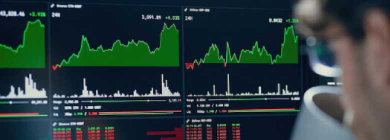

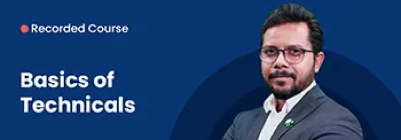



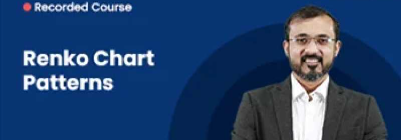
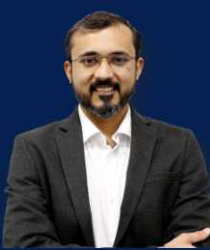






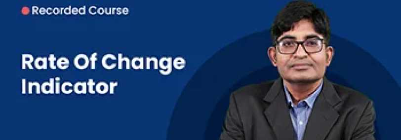

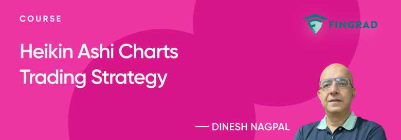

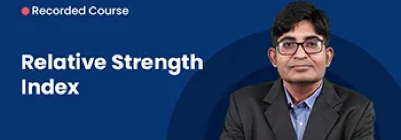













 Get Unlimited Access to The Economic Times
Get Unlimited Access to The Economic Times